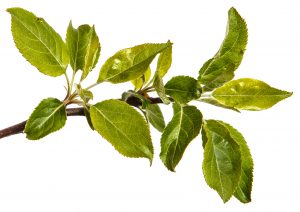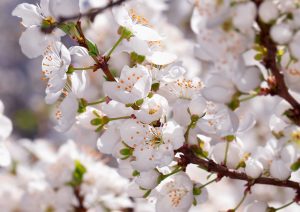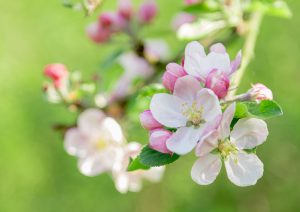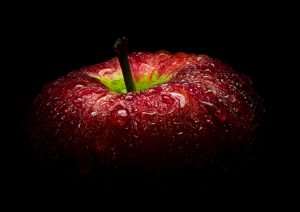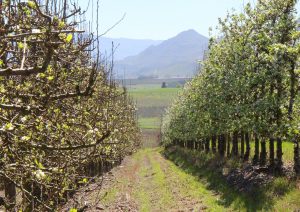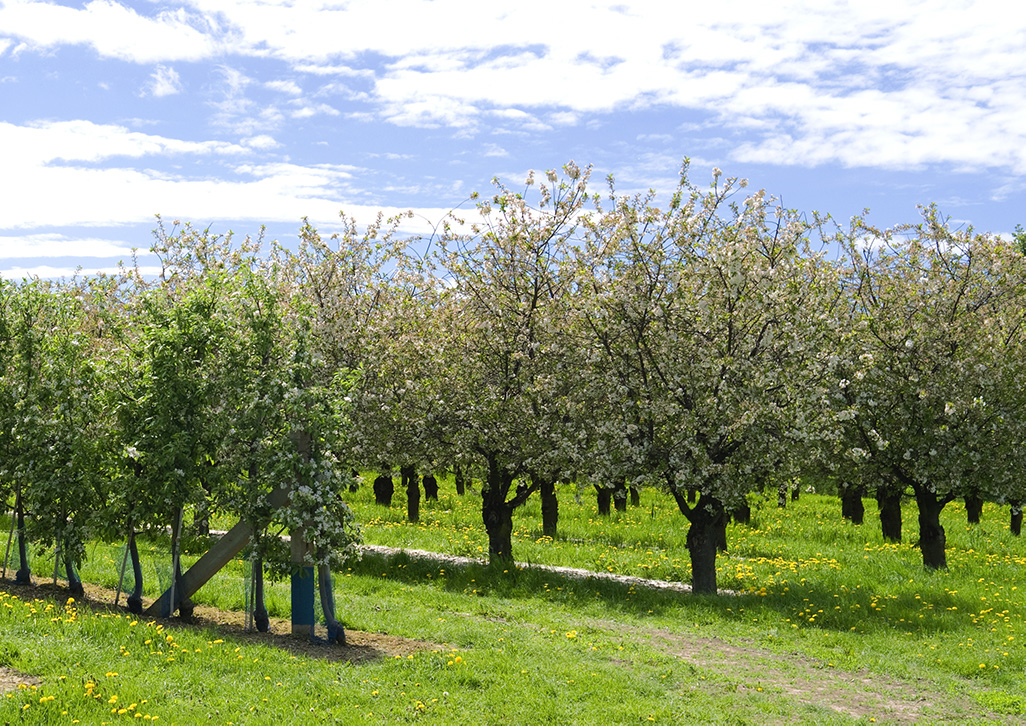
Late bloomers
The effect of extended bloom period on fruit quality. By Grethe Bestbier.
“I don’t have to explain to this audience the challenges of trying to farm apples with mixed maturity,” said Dr Esmé Louw from the Department of Horticultural Science at Stellenbosch University. Mixed maturity at harvest due to an extended bloom period is often seen in the Western Cape, where unsynchronised flower development results in flowers of different developmental stages on the same branch. This issue prompted Louw to investigate how extended bloom period affects fruit quality.
Making Christmas trees out of orchards
Louw identified six Golden Delicious orchards from two trial sites — Ceres and Grabouw. When October arrived, her team tagged newly developed flowers every second day using different colours.
“By the end of the extended flowering period, our apple trees looked like Christmas trees. We now had brightly decorated branches, clearly identifying when the flowers emerged,” explained Louw.
By harvest time the flowers had turned into fruit, still clearly marked by colourful tags. The apples were harvested and moved to the laboratory where they were split in two subsets.
One set immediately went for destructive maturity indexing to determine starch breakdown and flesh firmness. The other was stored for three months in a regular atmosphere, followed by a seven-day shelf-life period, after which it also underwent maturity analysis.
The process generated a robust dataset, and she could attempt to link extended bloom period with the quality parameters determined in the laboratory.
To compare the orchards from the two areas, the researchers overlapped the phenology by aligning all the full-bloom dates of the orchards. In this way, they could distinguish between fruit from early, full-bloom, and late flowers.
For Ceres, about a third of the fruit harvested came from flowers blooming during each of these periods. For Grabouw, almost half the fruit came from full-bloom flowers, 28% from early flowers and 24% from late flowers.
Therefore, while both of the areas show an extended bloom period, Grabouw seemed to have more of its fruit develop from full-bloom flowers while Ceres showed a wider distribution.
In terms of starch breakdown at harvest, Louw found different results for Ceres and Grabouw. Grabouw showed a higher starch breakdown, signifying greater maturity, for fruit from early-flower fruit compared to late-flower fruit. Ceres, on the other hand, showed no difference in starch breakdown between these groups.
Moving on to firmness at harvest, the apples from the two areas behaved the same. Fruit from early flowers were softer than fruit from late flowers.
Flower quality affects firmness after storage
According to Louw, Grabouw’s trends are typical of what they expected for both starch breakdown and firmness when suffering from an extended bloom period. The surprising result lies in firmness after storage.
“If we look at Grabouw, we can see what we would expect. Fruit from early flowers had higher starch breakdown values and lower firmness at harvest compared to the late flowers, and this pattern holds after storage. For Ceres, however, this was different. In terms of firmness after storage, there was no difference between the early- and the late-flower fruit.”
Louw said that they also succeeded in finding some valuable correlations in Grabouw’s data. They concluded that, firstly, one could use starch breakdown as an indication of the firmness at harvest, and, secondly, that firmness at harvest serves as an indication of firmness after storage. However, these correlations were much stronger in the full-bloom and late-bloom fruit compared to the early-bloom fruit.
The question remains: what made Ceres’ early-flower fruit behave so unexpectedly after storage, and how do we tie the flower to fruit behaviour?
According to Louw, a wider flower receptacle is a good indication of a high-quality flower. A flower with a wide receptacle has more cells. Some researchers have suggested that, in fruit of the same size, this can increase osmotic potential, leading to firmer fruit with a higher quality and extended storability, as well as improved acids and sugar levels.
From flowers harvested during the extended bloom period, Louw found that Grabouw’s flowers all had equally sized receptacles. This explained why all the fruit lost their firmness in a similar fashion after storage, resulting in softer early-flower fruit and firmer late-flower fruit. However, she saw that the early flowers from Ceres had wider receptacles compared to the later flowers, explaining why the fruit from early flowers had higher firmness values post-storage. She concluded that better quality flowers lead to better fruit storability.

